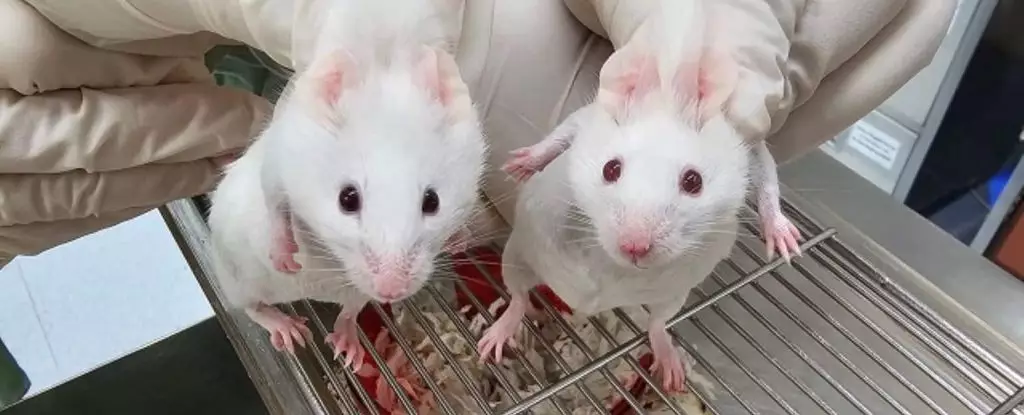Our understanding of evolution has always been enhanced by surprising discoveries at the intersection of genetics and cell biology. One such revelation originates from the recent laboratory endeavors carried out in Hong Kong, where scientists have engineered genetically distinctive mice that provide a fascinating glimpse into the evolutionary narrative shared by single-celled organisms and complex multicellular life. By integrating genes derived from choanoflagellates, a microbe that diverged from our animal ancestors long ago, researchers have begun to elucidate the origins of key biological traits that lay the groundwork for modern animals.
The Significance of Choanoflagellates in Evolutionary Biology
Choanoflagellates are fascinating organisms, considered the closest living relatives to animals. They exhibit remarkable genetic similarities that underscore a shared lineage, yet function as single-celled entities devoid of the complex cellular organizations seen in animals. The choanoflagellate’s evolutionary journey has been relatively unchanged for nearly a billion years, occupying a critical juncture in the history of life. The implications of this study stretch beyond mere genetic curiosity; they prompt a reevaluation of how fundamental cellular processes emerged long before multicellularity arose.
What makes choanoflagellates particularly intriguing is their possession of genes associated with pluripotency—an essential feature in animal embryonic stem cells that empowers them to differentiate into diverse cell types. Historically, pluripotency has been thought to have emerged in the context of multicellular organisms, signifying a major evolutionary leap. However, evidence from previous studies hints at the possibility that the groundwork for this remarkable cellular adaptability might have existed in choanoflagellates, thereby suggesting an ancestry of pluripotency that predates complex life forms.
In the groundbreaking experiment led by researchers Ya Gao, Daisylyn Senna Tan, and Mathias Girbig, the team replaced the Sox2 gene in mice with a version derived from choanoflagellates. The purpose of this genetic transformation was to examine whether these single-celled genes would retain functional capabilities in a more complex biological system. By reprogramming mouse stem cells to incorporate the choanoflagellate version of Sox2, the researchers created chimeric embryos that were subsequently implanted in mouse surrogates, ultimately leading to the birth of genetically hybrid pups.
The offspring display a combination of traits, including distinctively dark eyes and fur patches, signaling their unique genetic lineage. This curious mixture raises poignant questions about the compatibility of choanoflagellate genes within a mammalian framework. The successful development of these chimeras reinforces the notion that the mechanisms governing the pluripotency of stem cells may have deep roots in ancient cellular biology, revealing the evolutionary continuity that exists between vastly different life forms.
The Evolutionary Legacy of Gene Families
As the researchers delved deeper into the implications of their findings, they concentrated on the functionality of the Sox and POU gene families. The biochemical similarities between choanoflagellate Sox genes and the mammalian equivalent suggest a shared ancestral origin. Furthermore, their research indicates that essential tools for stem cell formation predated the emergence of multicellular life. This insight reshapes our understanding of the evolutionary advancements that laid the groundwork for the complex biological processes present in today’s animals.
Notably, while the choanoflagellate POU genes do not facilitate pluripotent stem cell formation, the study suggests that these genes underwent significant modifications during the course of evolution to acquire their current roles in multicellular organisms. This notion introduces a dynamic aspect to our understanding of how genetic adaptations can stimulate and drive evolutionary change.
The research conducted by this team of scientists not only reaffirms the interconnectedness of life across evolutionary time but also posits new avenues for investigations in stem cell biology. The presence of key genetic components in choanoflagellates that emerged long before the advent of multicellularity hints at novel approaches for understanding stem cell therapies and regenerative medicine.
As we reflect upon these discoveries, it is important to recognize that the implications of the study stretch beyond mere genetics. They challenge prevailing narratives about the evolution of life and the mechanisms that govern cell specialization, underscoring a need for continued exploration into the genetic legacies that shape our understanding of the diversity of life on Earth. The findings evoke curiosity and introspection about how far we have come in unearthing the intricate tapestry of life, informing both evolutionary biology and modern-day medical practices.
The intriguing interplay between ancient microbial genes and modern vertebrate biology may redefine our understanding of the evolutionary processes that have cultivated the rich biodiversity we observe today, beckoning a future where the lessons of ancient life profoundly inform contemporary scientific paradigms.


Leave a Reply